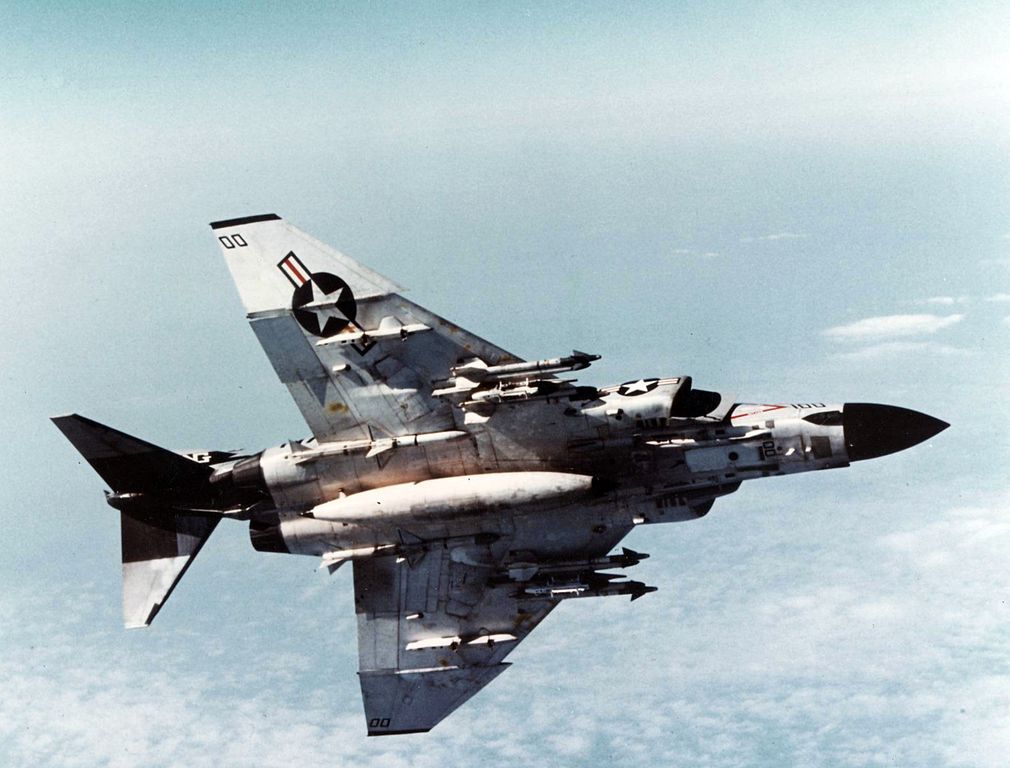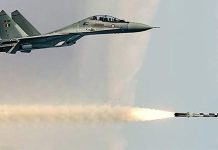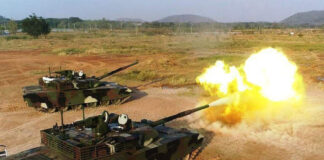F-4 Phantom II, one of the most famous and successful US aircraft of all time. Referring to the Phantom II, people will think of its extremely important role in the noisy American campaigns.
F-4 Phantom II appeared in all Vietnam battlefields, followed by the “Desert Shield” and “Desert Storm” campaigns that the US and its allies conducted in Kuwait and Iraq.
In Vietnam, after the war, the Vietnamese gained a lot of spoils, which were US-equipped fighters for the Republic of Vietnam Air Force, such as the F-5E Tiger II, A-37 Dragonfly or UH- 1 Huey. However, none of these F-4 Phantom IIs. F-4 was considered the main rival of MiG-21, the “Silver Swallow” of North Vietnamese. Although it was brought into Vietnam late, it proved to be a terrifying opponent for any enemy.
Because of the preeminent features of Phantom II, the Americans decided not to provide F-4 to the Republic of Vietnam. At that time, the risk of a coup was always lurking, there was a risk that the Saigon regime would betray, and then use F-4 against the Americans.
The F-4 Phantom II is an all-weather, supersonic, tandem two-seat, twin-engine aircraft, designed and built by McDonnell Douglas for the US Navy. The F-4 was originally designed as a fighter jet to protect US Navy fleets. But by 1963, the F-4 Phantom II was converted to use as a long-range supersonic jet interceptor and fighter-bomber.
The origin of the McDonnell F-4 was initiated by a Navy request from 1953 for an upgraded version of the carrier-based McDonnell F3H Demon fighter. To present its new fighter, the US Navy made a series of record-breaking flights in the early stages of the development of the Phantom II. At Operation Top Flight, on December 6, 1996, the second XF4H-1 prototype made a 30,040m (98,557 ft) high flight, breaking a world record. Operation Skyburner took place on December 22, 1961, an improved Phantom with water injection set an absolute world record for speed of 2,585 km/h (1,606 mph). In addition, F-4 also set many other world records with a total of 16.

The Phantom II was officially introduced in December 1960. At that time, the F-4 was considered a revolutionary design. It has a monumental dimensions with an empty weight of 13.7 tons (30,328lb) while the maximum takeoff weight is up to 28 tons (61,795lb). The fighter-bomber has a length of 19.2m, a wingspan of 11.7m and a height of 5m.
Phantom II features classic and refined lines, a perfect blend of smooth and sharp lines. The tandem-seat cockpit is located behind the elongated nose, fitted with an advanced pulse Doppler radar. The front cockpit is for the pilot while the rear is the system operator. Wings were highly-swept, low-wing monoplanes positioned in the mid-portion of the fuselage. Each main wing is cranked up slightly at the ends. The titanium material is widely used in F-4 airframe. The fuselage is quite plump, streamlined, each side arranges an air intake just below the cockpit and extends to the engine exhaust at the rear. The rather special tail cluster is placed above the engines exhaust, including a vertical tail fin like traditional designs, but the horizontal planes are bent downwards.

For a dozen tons of iron to fly at supersonic speed, the manufacturer equipped it with two General Electric J79-GE-17A after-burning turbojet engines, delivering 52.96 kN (11,905 lbf) of dry thrust each and up to 79.38 kN (17,845 lbf) with afterburner. In air combat, the Phantom’s greatest advantage was its thrust, which permitted a skilled pilot to engage and disengage from the fight at will. The F-4 can reach a maximum speed of 2,370 km/h (1,470 mph), equivalent to Mach 2.23, leaving behind a trail of fire up to 4 meters long.
The F-4’s nine external hardpoints have a capability of up to 8.4 tons (18,650 pounds) of weapons, including air-to-air and air-to-surface missiles, and unguided, guided, and thermonuclear weapons. Like other interceptors of its time, was initially designed without an internal cannon. The fierce reality in the Vietnam battlefield forced Americans to change their doctrine. The lack of a cannon was finally addressed by adding an internally mounted 20 mm M61A1 Vulcan on the later models.

Produced in 1958, a total of 5,195 F-4s were delivered, until 1981 production lines stopped. It is the most produced American supersonic military aircraft. During operation, the Phantom II demonstrated its high adaptability, famous as the North Vietnamese Air Force’s Mig-21 confrontations. It served as the principal air superiority fighter for the US Air Force, Navy, and Marine Corps and became important in the ground-attack and aerial reconnaissance roles late in the war. The F-4 continued to form a major part of U.S. military air power throughout the 1970s and 1980s, being gradually replaced by more modern aircraft such as the F-15 Eagle and F-16 Fighting Falcon in the US Air Force, the F-14 Tomcat in the US Navy, and the F/A-18 Hornet in the US Navy and US Marine Corps.
Not only trusted by the US Marines and the US Air Force, the F-4 Phantom is quickly exported to other countries. Israeli Phantoms saw extensive combat in several Arab–Israeli conflicts, while Iran used its large fleet of Phantoms, acquired before the fall of the Shah, in the Iran–Iraq War.
As of 2020, 62 years after its first flight, the F-4 remains in service with Iran, Japan, South Korea, Greece, and Turkey. The aircraft has most recently been in service against the Islamic State group in the Middle East.
Returning to the story at the beginning, the Republic of Vietnam Air Force had asked the United States to provide F-4 Phantom II in 1972. At that time, under the Paris Agreement, US Air Force units were forced to withdraw, opened the opportunity to own the Phantom II for the Saigon government. However, in the end, no F-4s remained.
Although a very formidable weapon, but if the United States meets the aspirations of the Saigon government, it is unlikely that they will be fully effective. The reason is that a heavy fighter like the F-4 requires a lot more complicated and time-consuming preparation steps than the F-5E. Most of the aircrafts were not in a state of readiness to fight, which was the general condition of the Republic of Vietnam Air Force at that time. In addition, there is a high possibility that there will be some Phantom II on the North Vietnamese booty list because it could not flee. The Americans did not want the North Vietnamese Air Force to be supplemented with such a powerful type of fighter.
The article has been researched and compiled by Dung Tran Military from reliable sources. If you have any additional information, please do not hesitate to email Dung Tran: dungtran@military-wiki.com. Dung Tran appreciates all your contributions. Thank you all.






















